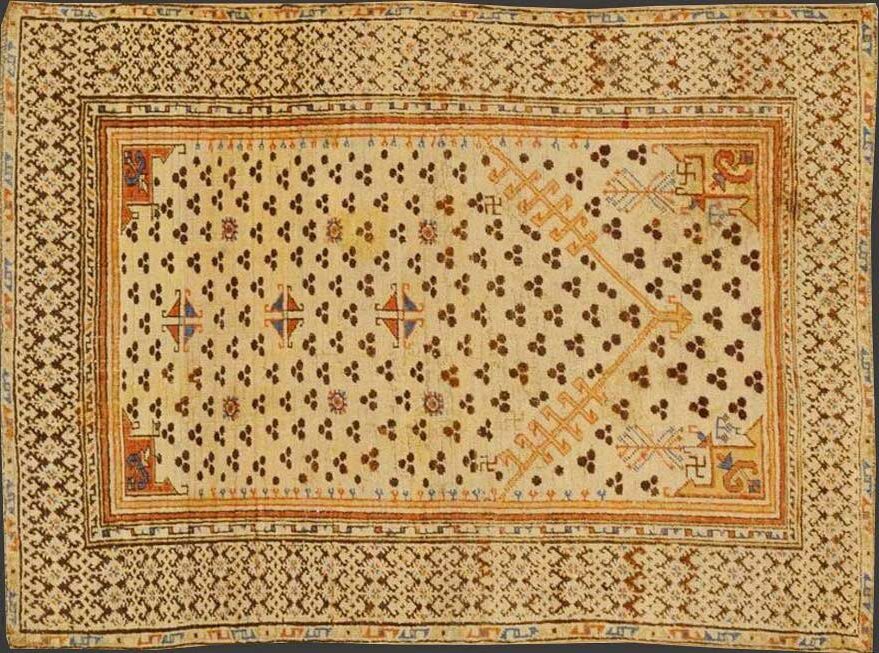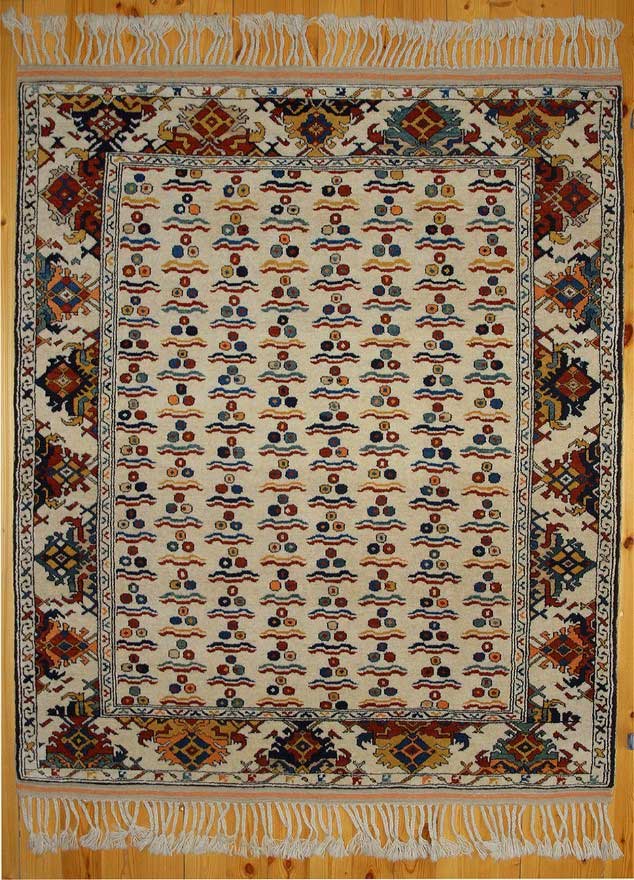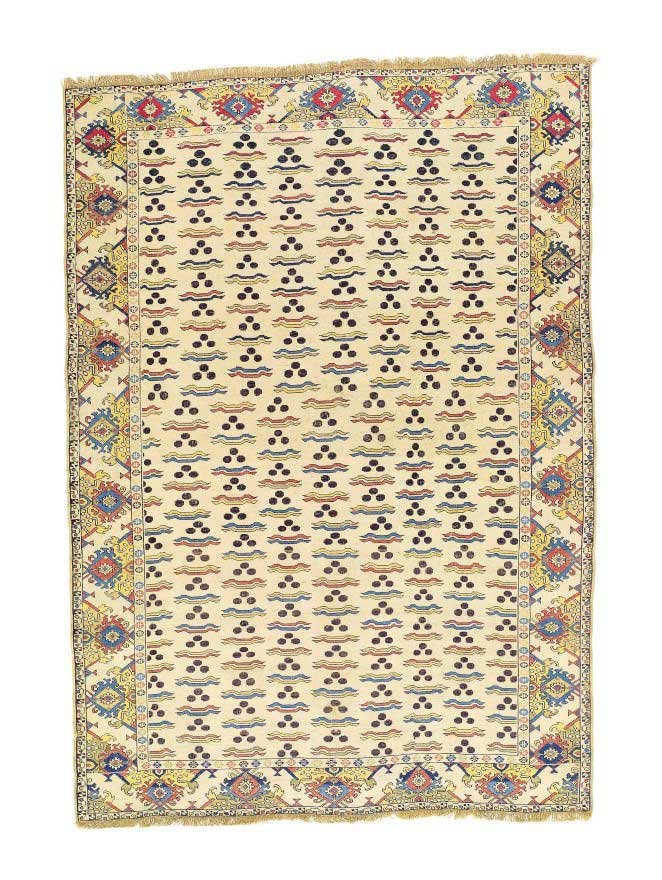Chintamani
Flag of Timurid Empire
Chintamani is a well celebrated motif in Turko-Mongol tradition widely used all over the Orient on various objects from Amir Timur’s badge to the Ottoman royal rugs.
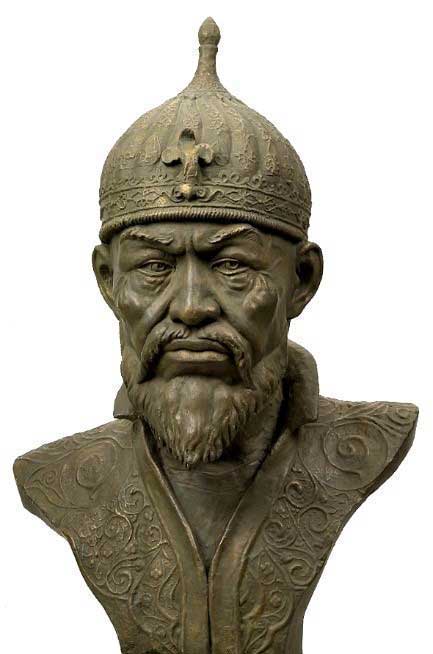
Timur facial reconstruction from skull, by Mikhail Mikhaylovich Gerasimov
The prevalent motif consisted of three spots above two parallel waving lines. The three bezants of the Timurid Empire’s banner arranged in a triangle should be considered a variation of Chintamani, interpreted usually as the symbol of peace.
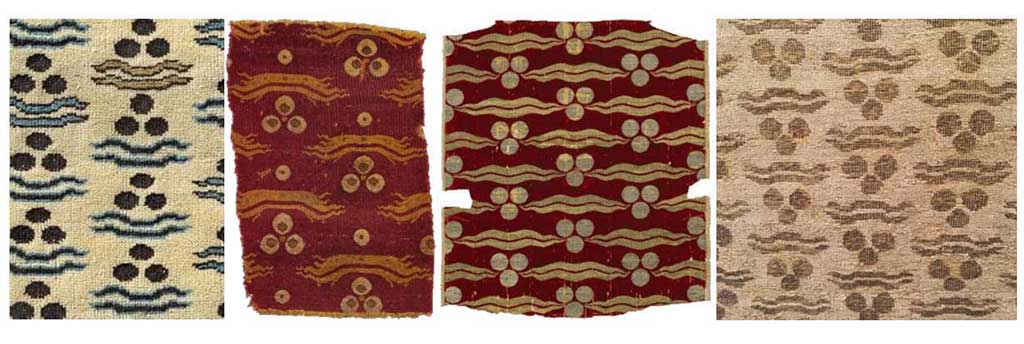
Used in antique Ushaks as repeating pattern in all-over designs, Chintamani is a motif of three spots above two parallel waving lines
Chintamani may be originated in China. Some suggest that it should be originally a Buddhist symbol. Even so the motif widely used by Turkic and Mongol tribes, spreading from the steppes to Anatolia.
The motif used in Anatolian rugs as a repeat in an all-over patterned design attributed to the Ottoman Court. There are antique
Chintamani pieces in the world museums, probably woven in Ottoman royal workshops of Ushak, an old city in the west central Anatolia.
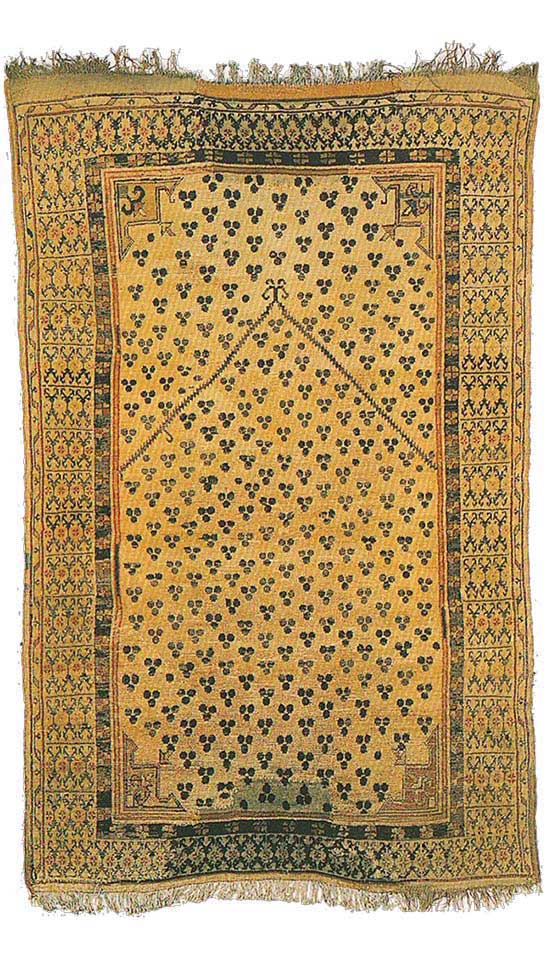 Turkish rug with a chintamani motif
Turkish rug with a chintamani motif
During the 16th and 17th centuries Chintamani variations were used on Ottoman ceramics as well as woven pieces, being considered a token related to Sultan and his Imperial majesty.
Chintamani is an iconic motif that has been used in Turko-Mongol tradition for centuries. It is widely seen on various objects, from Amir Timur’s badge to the Otto. This motif has been a source of inspiration and admiration for generations, and it still fascinates people today. Its symbolism and meaning have remained relevant throughout the centuries, making it one of the most celebrated symbols in Turko-Mongol culture.
is a well celebrated motif in Turko-Mongol tradition that has been used for centuries in the Orient. It is most commonly seen on various objects, such as Amir Timur’s badge and the Otto. The motif is believed to bring good luck, protection, and prosperity to those who possess it. It has been used by many cultures throughout history, from the Chinese dynasties to the Ottoman Empire. Its intricate details and powerful meaning make it an iconic symbol of strength and beauty.
Turkish rug with motif
Turkish “Chintamani and Tulip” rug fragment. Konya Ethnographic Museum
Turkish rug with motif

